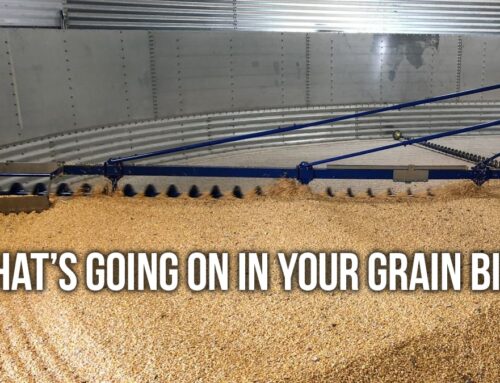Understanding how to read grain prices is a skill all producers need to make decision on the farm. But it’s not always easy. In fact, it may feel at times like grain companies go out of their way to make reading grain prices difficult. Which makes it even more challenging because part of a good grain sales strategy should be comparing opportunities across multiple buyers. And that can prove to be quite challenging, even for experienced grain marketers.
So, we’ve put together a quick reference guide for you to bookmark and refer to when needed.
Cash Price
The cash price for hedged commodities such as wheat, corn, soybeans and canola are made up of a basic formula:
Cash price = futures + basis +/- premium and discounts
Futures
Futures level are constantly changing throughout the trading day. Websites like Barchart show the latest futures prices and how the price has changed throughout the day.
When you’re looking at futures charts like these, it’s important to understand what you’re looking at.
The contract symbols are structured as follows:
- First two letters are the commodity
- Third letter is the future month
- Numbers are the year
For example: MWK18
MW = Minneapolis Spring Wheat
K = May
18 = 2018

Last: The last or most current trade price. In this case 614.6 = $6.146 futures price in US Dollars per bushel
Change: The difference between current price and previous settlement price.
Open: Opening price for today.
High: The highest trading price for today.
Low: The lowest trading price for today.
Previous: The settlement price on the previous trading day.
Volume: The number of contracts traded today.
Open Interest: Total open option contracts that have been traded but not liquidated with offsetting trades.
Basis
Basis is the component of the cash price that is determined by local supply and demand. Basis levels vary at each grain terminal and can be negative or positive values. When reading the basis part of grain prices, it is important to know if it is in Canadian dollars, what delivery period it is for, and what unit of measure (bushels or metric tonnes) is being quoted.
A high basis indicated a high local cash price relative to the futures market. It’s an indication of strong demand or limited supplies locally.
Weakening basis is an indication that local supply is large compared to the overall supply.
Premiums and discounts
Premium and discounts will be specific to the buyer as well as specific to the grain you deliver. Depending on market conditions, the grade of the grain, or what a grain company is looking for, premiums and discounts are very common. When contracting, ask what the premium and discount levels are. Having grain samples graded at multiple locations is a good way of knowing what quality the grain is and can help make marketing decisions based on quality.
Other things to have top of mind when reading grain prices
Currency
It is important to know what currency the price is being quoted in and how the grain company handles foreign exchange. Grain companies can adjust for the foreign exchange in either the futures or basis.
- US dollar futures prices: wheat, soybeans, oats, corn
- Canadian dollar futures prices: canola
- Speciality crops are usually quoted in the currency the buyer operates in (Canadian buyers quote Canadian dollars)
Grade
The grade of the grain being quoted can make comparing grain prices difficult. Wheat specifically can be very challenging as companies quote different base grades when giving prices. Grade will also impact any premiums or discounts that are applied to the price. If the grade of the grain delivered doesn’t match the grade that was contracted, the price will be affected.
Asking the right questions
When getting a grain price quote you’re gong to want to ask some questions. That’s why knowing who the buyer is you’re dealing with is so important.
- What grade is this price for?
- What is the delivery period?
- Which futures month is that price based off?
- What is the basis?
- Is that in Canadian Dollars?
It’s not just about knowing how to read grain prices, it’s also about knowing how different buyers quote their prices. A solid understanding of both will help you make better decisions when selling your grain. For growers on the CXN360 network, they find value is seeing bids throughout the year as a way to prepare them when actually selling their grain. It’s part of how they educate and inform themselves of what they can expect. Get in touch if you’d like to start a complimentary membership and receive grain bids specific to your area.
An easy way to remember how basis works.
Think of basis like you think of a cover charge at the bar. If it’s Sunday afternoon and the only sports on the screen is lawn bowling, the bar won’t charge a cover. In fact, they might even buy you a drink just to get you in the door. This would be similar to spring when you’re busy seeding. Buyers typically have space and rail capacity (maybe not this year!). The basis is high because they want your grain.
On the other side, imagine a Friday night with a great local band playing. With a line up down the street, the bar can expect a $40 cover charge. This Friday night is like harvest time when there is a good local supply, others selling grain, and there is limited space. There is a weakening basis and a cost to doing business now.




